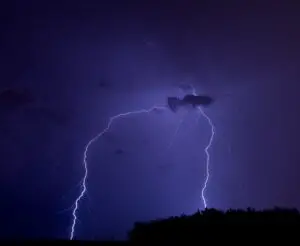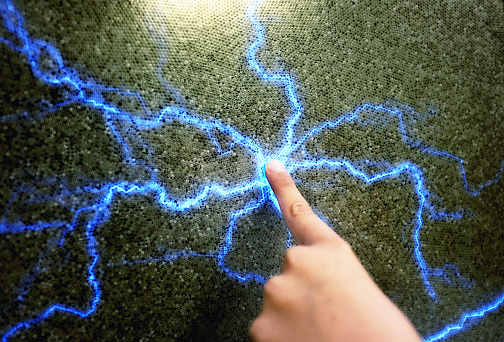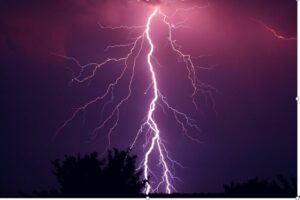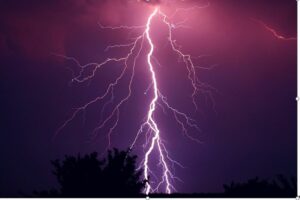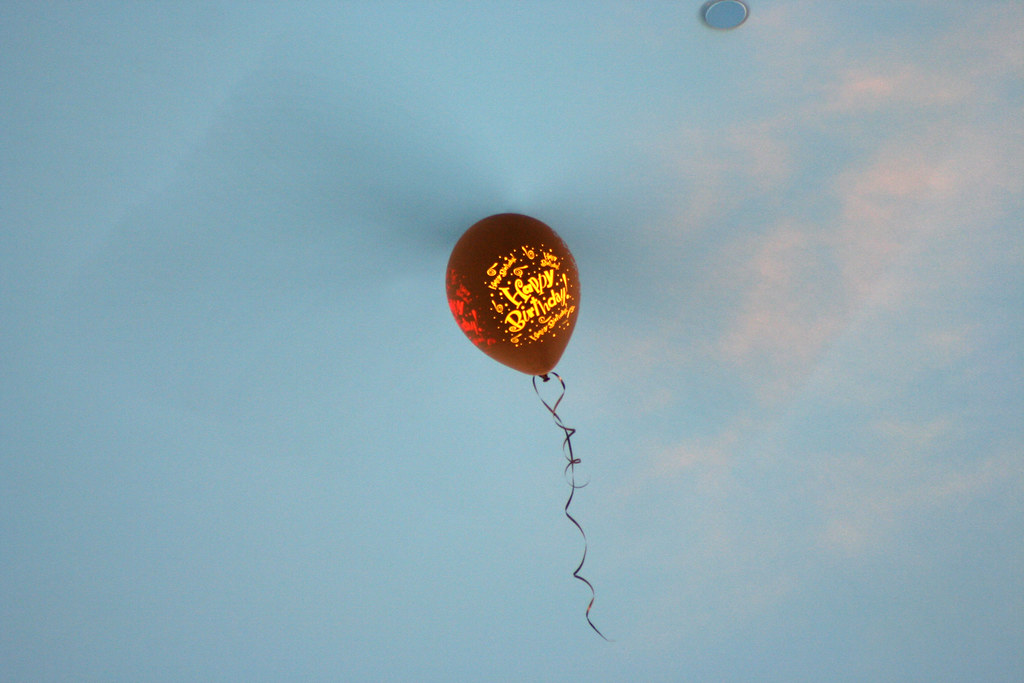In this article, we will discuss what causes static electricity and other factors related to it.
Whenever opposite charges are not regulated, static electricity is generated. Protons and neutrons do not really move so much, while radicals love to bounce everywhere! A negative charge is assigned to an item (or person) when it contains additional electrons.
The simplest way to create static electricity is to use electricity-restricting substances termed insulators, which include rubber, cotton, and hair. Electrons make currents in electricity, which powers phones, lights, and practically all other electronics, bypassing between atoms in conductive substances such as a copper wire.
The atoms of insulators, on the other hand, do not allow electricity to move freely; instead, they acquire their title by impeding electron passage.
What causes static electricity in the body?
Whenever electrons are handed up by substances such as glass, hair, or some kinds of fabric due to friction, and those electrons accumulate voltage, the substance grows more prone to draw an electric current, which we experience as a static shock, also called an electrostatic shock.
What causes static electricity in the house?
One of the primary causes of static electricity is dry air.
The dryness of the winter months may be bothersome during this time of year. A shortage of moisture in your house may cause problems with wood furniture and carpeting, as well as uncomfortable health concerns. That is why it is advisable to include a humidifier that will guard against all of these issues.
What causes static electricity in the air?
Because air is an insulator, electrons cannot easily flow through it. When there is more moisture in the air, electrons may flow around more easily. Substances that scrape versus one other or things that are traveling apart create electric charges.
What causes static electricity in hair?
Whenever the substance of your hat scrapes against your hair strands, electrons are exchanged. As a consequence of the switch, an electric charge piles up on the hair. If there is enough moisture in the air, the charge will generally dissipate.
What causes static electricity in clothes?
Static energy in clothing causes static hold. When bits of fabric brush across one other, such as in a hairdryer, an electrostatic charge builds upon them owing to the triboelectric effect. Separately charged positive and negative materials repel each other.
What causes static electricity in winter?
Heat is lower in the cold season. You have a reduced humidity level and reduced aqueous vapor in the air because cold air stores less liquid than hot air. Your skin can hold a bigger charge since there is less moisture vapor in the air to transport the charges away from you.
What causes static electricity in blankets?
Several fabrics are more prone to jolt people in the dead of cold whenever the wind is dry if it pertains to your mattress.
Electrostatic cling is a problem with rayon, acetate, polyester, and nylon, therefore avoid them if at all feasible. Instead, choose a fabric that is more natural, such as cotton, wool, silk, or linen.
What material causes static electricity?
Wool, human hair, dry skin, silk, nylon, tissue paper, plastic wrap, and polyester are substances that prefer to acquire or release electrons, and we may have discovered that they pushed the metal ball identically to the Styrofoam plate once you tested them.
What force causes static electricity?
Substances are held collectively by a force known as the adhesive molecular force.
The adhesive molecular force, on either hand, removes electrons from one substance and deposits them in the other when two dissimilar materials are squeezed together and then torn apart. As a consequence of the ion breakup, static electricity is generated.
How to remove static electricity from the body?
Allowing static electricity to accomplish whatever it desires – release from your skin into the ground – is the quickest approach to get rid of static electricity in the system. Contact any metallic substance that is not separated from the surface, such as a lamp panel bolt or a metal streetlight pole, to enable this.
Friction and dissociation are most likely the most prevalent causes of static in industries that produce film and sheet. It occurs when the material is unwound or travels over a roller. This mechanism is not known exactly, but the best comparison for how static electricity is created here is a comparison with a plate capacitor, in which mechanical power used to divide the plates of a capacitor is turned into electric power.
Whenever the material comes into contact with the roller, a tiny charge is transferred from the substance to the roller, generating an imbalance. The voltage is amplified when the material exits the roller, much like the dividing layers of a capacitor.
In actuality, the magnitude of the resulting voltage is limited by the disintegration power of the adjacent substances, surface conduction, and so on. As the substance exits the roller, you may hear minor crackles of static discharge. This is the point at which the static has exceeded the disintegration power of the neighbouring air.
Sudden Temperature Change
Pyroelectricity is the capacity of some substances to create static electricity when warmed or chilled. Polymer mouldings, in the example, are susceptible to accumulating static charges when they cool following shaping or later temperature processing. Until a plastic product is substantially cold, it is not electrically stable: A common goal temperature for electrical reliability is 40o – 50o C.
High-Intensity Radiation
Although it is uncommon in the industry, exposure to UV, X-rays or high electric fields can result in the formation of a static charge. Plastic films that have been Corona treated to increase printability frequently display unwelcome amounts of static energy.
Action on Cutting
A static charge will be generated throughout the sheet cutting, slashing, and editing procedures. On a single page level, this might not be a big issue, but when numerous sheets or parts are piled, the ‘cell effect’ can build a considerable and potentially dangerous static charge.
Induction
If a controller sporting thermal insulating footwear stands inside the area of a static generating process, then steps away and contacts an earthed object, they may suffer a painful but normally innocuous static release. It can be harmful not because of the electrical jolt, but due to the operator’s uncontrolled ‘recoil’ response.
All matter is made up of atoms. Protons, electrons, and neutrons make up an atom. Neutrons are chargeless, while protons have a positive value and electrons possess a negative charge. As a result, everything is made up of ions. Charges that are diametrically opposed are attracted to one another (negative to positive).
Similar ions oppose one another (positive to positive or negative to negative). Most of the time, positive and negative charges in an entity are balanced, rendering it neutral.
Static electricity is caused by an unbalance of negative and positive ions in a given item. These charges can build up on an object’s surface before being discharged or dissipated. A circuit is one method of discharging them.
Negative ions, or electrons, can be transferred by rubbing certain substances versus one another. When you wipe your shoe on the floor, for instance, your body gathers more electrons. Before they may be liberated, electrons adhere to the human body. You feel a jolt when you reach out to touch your fuzzy pet. Don’t panic, it’s just your excess electrons being delivered to your unwitting pet.
What about the “hair-raising” encounter?
As you discard your hat, electrons flow from the hat to your hair, resulting in that unique hairstyle! Keep in mind that things with equal value repel one another. Your hair will spike on end since they have the equivalent charge.
Your hairs are merely attempting to go as far apart as feasible! Whenever you brush a balloon across your clothing and it adheres to the door, then add an excess of electrons (negative charges) to the balloon’s skin. The balloon now has a higher positive charge than the wall. Since opposites attract, the balloon will attach to the two when they come into touch (positive to negative).
Explore the Online References additional And Studying pages for extra static electricity knowledge and exercises.
Frequently asked questions| FAQs
Ques. What is a basic understanding of static electricity?
Ans. Static electricity is a well-known electric phenomenon that involves the transmission of charged ions from one object to another.
For example, when two items are rubbed together, the objects accumulate equivalent and contrary charges, particularly if the items are insulators and the nearby air is dry.
Ques. Is static electricity dangerous?
Ans. Static electricity is not harmful, which is fantastic news. Our body is mostly water, and water is an ineffective conductor of electrical current, particularly in such small volumes. That is not to say that electricity cannot harm or kill you.
Ques. How do you remove static electricity from a trampoline?
Ans. To generate more electrical currents on a trampoline, you must produce a lot more resistance. Roll about on the mat, rubbing your hair on the trampoline. If we do this for ten seconds, we should generate sufficient resistance to generate a significant quantity of static electricity.
Ques. How can I avoid static electricity?
Ans. Carrying a safety pin or metallic key in your wallet may be the simplest way to deal with static electricity.
Contacting with it first releases electron charges to protect against shocks. Furthermore, before placing it on clothing, use a metallic hook and gently brush it against them.
Ques. Is there a current in static electricity?
Ans. The charge persists until it can be removed by an electric current or electrical release. Static electricity is distinguished from current electricity by the fact that the electric charge moves via an electrically conducting or vacuum and transfers power.
Ques. How can one distinguish between static electricity and electricity?
Ans. The primary distinction between static and current electricity is that with static electricity, ions are at rest and accumulate on the skin of the insulator. In contrast, electrons move within the wire in current electricity.
Ques. As we touch somebody, why do we sense a current?
Ans. Whenever a body or item has too many electrons, it generates a negative charge. As a result, these electrons are drawn to the positive electrons (reverse attracts) of some other item or person, and vice versa. The fast migration of these electrons causes the shock that humans occasionally experience.
Whatever we see surrounding us is composed of the basic architecture of components known as atoms. They are invisible to the naked eye and are made up of positive ions, negatively charged ions, and neutral neutrons. Almost all of the time, an atom is neutral, which means it has an equal proportion of protons and electrons.
However, when protons and electrons in an atom are in odd numbers, electrons become stimulated. Protons and neutrons do not move, and it is largely electrons that jump.
Ques. What is the charge of a human hair?
Ans. The charge that is negative
According to Thomas, hair generally possesses a negative charge — similar to static electricity — but this is isolated by our hair’s protecting fatty coating. Injured hair has a stronger negative charge, which causes the hairs to physically want to split from one other, resulting in frizz.
Also Read:


